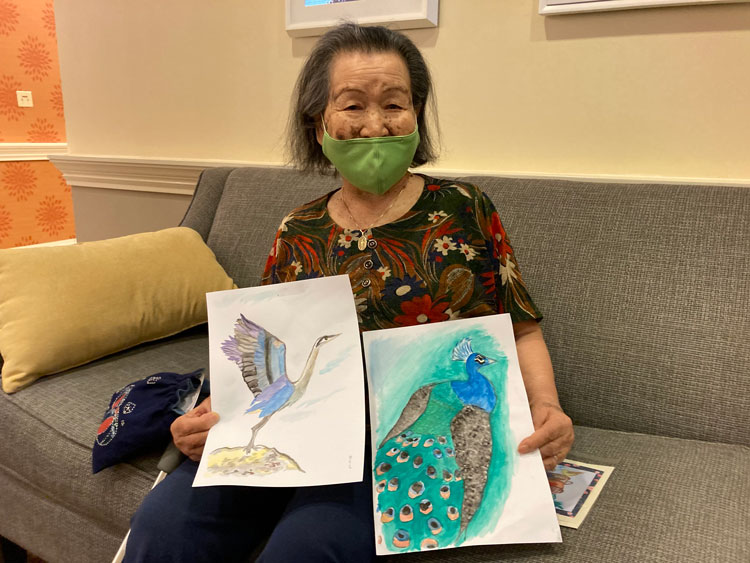By Mikiko Amagai, For The North American Post
About 20 years ago when I was working for the NAP, a group of doctors, sent by the Japanese government, visited the atomic bomb survivors in Seattle every two years. Ladies from the Hiroshima Club welcomed and took good care of them. One of the ladies, Rikuko Tanaka, a survivor, is now 94 years old. I wanted to hear what she saw on that day, August 6, 1945 when the bomb was dropped. I visited her in an assisted living home on Capitol Hill.
“I don’t know what else to do now… All my friends have passed away. I have nothing to do. I want to go, too…,” Rikuko said, with a smile.
She has a hard time hearing now but remembers that day vividly.

Rikuko was 18 years old and a hospital intern in Hiroshima. She saw a sharp blue light outside and rushed into her dormitory. A huge shoebox shelf fell down on her and she was stuck between the shelf and the wall. She called for help many times and began to lose her voice. Eventually, an old man and his son passed by and saved her. Her shoulders were pressed by the weight of the shelf, but fortunately, she did not seem to have been exposed to direct radiation. Immediately, she was assigned to helping others.
Day after day, she worked as a nurse to provide medical treatment to people in tragic conditions in bombed areas.
“It was so hectic,” she said, with a faraway look in her eyes.
About a month later in September, she ran into her father and her aunt in the lobby of the dormitory.
“She is alive, she is alive!” they screamed with tears.
“My father came to look for the remains of my dead body.”
Rikuko was so happy to be alive but feels so bad that she didn’t say “thank you” properly to the old man and his son that day.
“I wanted to ask their names but my voice was so hoarse I couldn’t speak… They may have gone by now.”
Many years passed. Rikuko met her future husband, who visited Japan as a tourist.
“I knew my husband’s sister. She was in Hiroshima, so seven Japanese men as a group came from America. They went back but he came back alone and ask me to go to America with him.”
He fell in love at first sight. But she was reluctant to leave Japan as she didn’t speak English and an unknown place would scare her.
“Go! You can always come back if things don’t work!” encouraged all of her hospital friends.
She took off and never went back to Japan.
They settled in Seattle. Her husband worked as a driver at the Consulate General of Japan and she worked as a library clerk at what is now Seattle Central College.
“His sister was a secretary there and got me the job. I didn’t speak English but they kept me there for so long. I was lucky – I just checked the numbers (on books) and put them back on the shelves – it was something that even I could do.”
 At her present residence, she was asked to attend a painting class. She didn’t know what to draw.
At her present residence, she was asked to attend a painting class. She didn’t know what to draw.
“They said to draw something, so I did and it went surprisingly well.”
She went to her room and brought back two drawings of birds: an emerald green peacock with a dignified presence, as though it walked out from a dream, and a crane filled with the power of life, taking off into the sky with a goal.
Both drawings represent the vitality that emerged from her life that was saved from the bombing and her secret childhood dream – to travel around the world. Rikuko’s warmth is felt through the birds.
“I will come back again so please stay healthy and be well,” I said to her, and she nodded firmly with a full smile.
Contrary to the original purpose of my visit, I was the one who was encouraged by her drawings of birds with strong wills.







